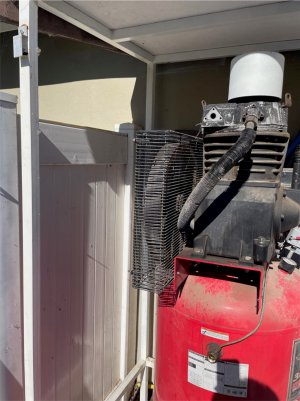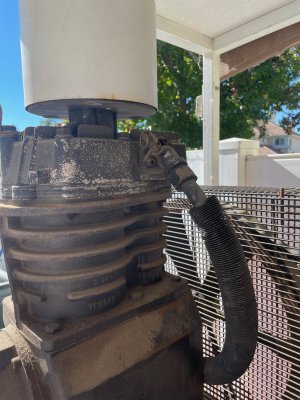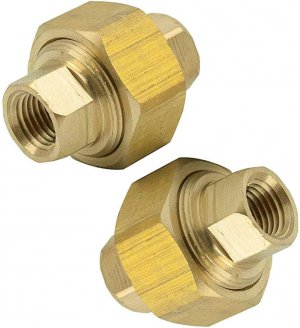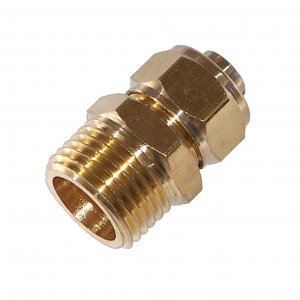Hi everyone,
I appreciate your recommendations, education, and patience, for that matter, and I want more, please. This is my setup and plan.

This is a partial view of the compressor closet on the side of my garage. Two sides consist of the garage wall, and one is the 6’ vinyl fence facing the street (in the photo). The other two sides are matching vinyl siding panels that are set into U-shaped brackets. The top brackets swivel on bolts, making access to the compressor from the two important sides quick and easy. The bottom of these panels sit about 6” above the concrete. I extended the tank drain and ball valve to be flush with the panel so it’s protected and easy to get to without having to lie down to get to it. For those who read the Today’s Joke thread—It counts as a squat!
I live in an association and did not seek approval before I built it, but I built it to be stealthy and figured it would be better to ask forgiveness than permission. I painted the steel white to match the fence and house trim, and the roof matches the house. I got away with it for two years before they noticed. Fortunately, all I had to do was to submit an application, and they approved it.
My plan is to mount the aftercooler and water separator with auto drain between the two uprights on the left in the photo. I will run it without a cooling fan, but I will add one if needed. My two high-air volume requirements are for the blast cabinet and the plasma cutter. I intend to do some painting soon.
I can make a new flange for the head and either use copper tubing or the leftover 3/4” RapidAir tubing to and from the aftercooler. Is one more appropriate than the other? Both would use compression fittings. There is plenty of material in the head for me to tap and thread, as
@sdelivery suggested. Drill America, via Amazon Prime, sells a drill and tap for $15.25 delivered. I am hesitant to modify the head.
Note the fitting in the tank with the 1/4" line extending up to the regulator.
@Firstram, is this simply a fitting, or is there a check valve in it? Do I leave it, move it, or what? I'm trying to wrap my mind around this piece and the Genie check valve you recommend. I like the idea, and the price is reasonable. The photo below shows a valve, but I'm not sure it does what the check valve you recommend does. I'm not sure if they are the same thing or if both are necessary. I always hear a valve relieve pressure, but I've never noticed which one is doing it.

This is all I can think of for now. Thanks!




